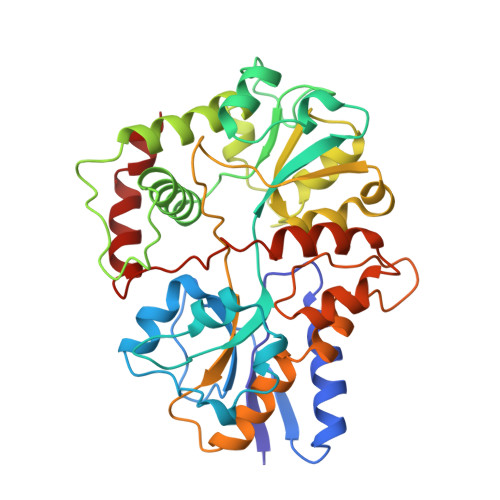Crystal structure of thiaminase-I from Bacillus thiaminolyticus at 2.0 A resolution.
Campobasso, N., Costello, C.A., Kinsland, C., Begley, T.P., Ealick, S.E.(1998) Biochemistry 37: 15981-15989
- PubMed: 9843405
- DOI: https://doi.org/10.1021/bi981673l
- Primary Citation of Related Structures:
2THI, 3THI, 4THI - PubMed Abstract:
Thiaminase-I catalyzes the replacement of the thiazole moiety of thiamin with a wide variety of nucleophiles, such as pyridine, aniline, catechols, quinoline, and cysteine. The crystal structure of the enzyme from Bacillus thiaminolyticus was determined at 2.5 A resolution by multiple isomorphous replacement and refined to an R factor of 0.195 (Rfree = 0.272). Two other structures, one native and one containing a covalently bound inhibitor, were determined at 2.0 A resolution by molecular replacement from a second crystal form and were refined to R factors of 0.205 and 0.217 (Rfree = 0.255 and 0.263), respectively. The overall structure contains two alpha/beta-type domains separated by a large cleft. At the base of the cleft lies Cys113, previously identified as a key active site nucleophile. The structure with a covalently bound thiamin analogue, which functions as a mechanism-based inactivating agent, confirms the location of the active site. Glu241 appears to function as an active site base to increase the nucleophilicity of Cys113. The mutant Glu241Gln was made and shows no activity. Thiaminase-I shows no sequence identity to other proteins in the sequence databases, but the three-dimensional structure shows very high structural homology to the periplasmic binding proteins and the transferrins.
Organizational Affiliation:
Department of Chemistry and Chemical Biology, Cornell University, Ithaca, New York 14853, USA.
















